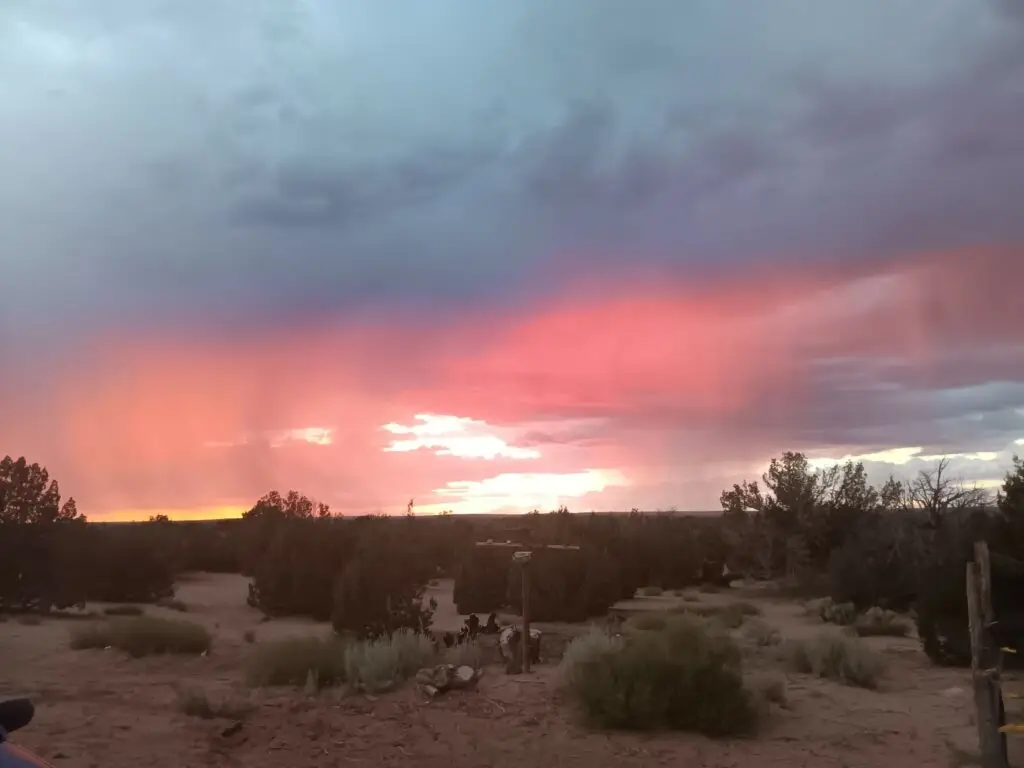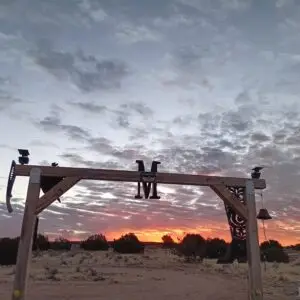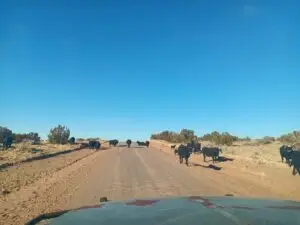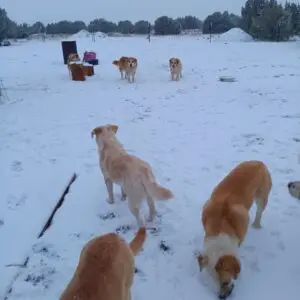About Me

On a personal level I am a homesteader in beautiful Witch Well Arizona. Our downtown consists of our church and that’s it! We have gone back to the roots of living and left the big city life. At first, it was due to cost of living rising so high we simply couldn’t afford living in the city, 2.5K for a studio apartment, seriously? So we bought an RV trailer and hit the road. We settled up here in beautiful Northern Arizona and never turned back. While homesteading isn’t for the faint of heart, we do enjoy fresh vegetables and we have fresh EGGS! ( These are like gold here in the US right now ). We are completely off-grid with Solar power ( no shortage of sunshine here in Arizona! We currently haul our water, but will set up rain capture ( or a well if we can raise 15K hahahah ). For internet we have Starlink which has been amazing.
We have 13 dogs, 12 cats, and 5 chickens. We are waiting on more farm animals until we build up more. It has been an adventure and learning experience to be sure!
I experimented with AI to explain homesteading in Northern Arizona. It was pretty spot on.
Embracing the Arid Life: Modern Homesteading in North Eastern Arizona
North Eastern Arizona, a land sculpted by a semi-arid climate and boasting unique, resilient ecosystems, is increasingly attracting individuals and families drawn to the principles of modern homesteading. This movement emphasizes self-sufficiency and a deep connection with the natural world, taking root in the challenging yet rewarding desert landscape. Here, homesteaders are not just living off the land; they are actively engaging with it, employing a variety of practices from cultivating gardens and raising livestock to harnessing renewable energy, all while thoughtfully adapting to the nuances of their environment.
Key Aspects of Modern Homesteading in North Eastern Arizona:
Life as a modern homesteader in this region is a tapestry woven with several essential threads:
- Adaptability to the Desert: Perhaps the most crucial aspect is the ability to work with the desert, not against it. This involves developing ingenious strategies for water management, selecting drought-resistant crops that thrive in the arid conditions, and implementing sustainable land practices that conserve and enhance the delicate ecosystem.
- Water Harvesting: In a dry land, water is gold. Homesteaders here prioritize collecting rainwater through various methods and meticulously manage their irrigation systems to ensure every drop counts. This careful stewardship of water resources is fundamental to their success.
- Livestock and Poultry: The familiar sights and sounds of a homestead often include chickens scratching in the dust, goats browsing hardy vegetation, or other livestock providing valuable resources like eggs, meat, and milk. Choosing breeds well-suited to the climate is key to sustainable animal husbandry.
- Gardening: The satisfaction of growing your own food takes on a special significance in the desert. Homesteaders cultivate vibrant gardens filled with drought-tolerant crops and vegetables, learning the rhythms of the seasons and the specific needs of their plants in this unique environment.
- Renewable Energy: Embracing self-reliance extends to energy production. Many homesteads in North Eastern Arizona harness the abundant sunshine with solar panels and utilize wind power to meet their electricity and other energy needs, reducing their environmental footprint and increasing their independence.
- Food Preservation: The bounty of the garden and the yields from livestock are carefully preserved for leaner times. Traditional techniques like canning, freezing, and drying are essential skills for extending the harvest and ensuring food security throughout the year.
- Community: While homesteading often evokes an image of independence, the reality in North Eastern Arizona is often one of strong community bonds. Sharing knowledge, resources, and support with fellow homesteaders in the area creates a valuable network and fosters a sense of belonging.
- Legal Considerations: Navigating the legal landscape is also a crucial aspect. Homesteaders need to be well-informed about local zoning regulations and homestead laws, which can impact their ability to build, develop their land, and operate their homestead in accordance with local ordinances.
Specific Challenges and Opportunities:
The path of a North Eastern Arizona homesteader is not without its hurdles, but these challenges often pave the way for unique opportunities:
- Water Scarcity: The defining characteristic of the desert climate, water scarcity, presents a constant challenge for access and management. However, this necessitates careful planning, innovative water harvesting techniques, and a deep understanding of water conservation, leading to resourceful and resilient homesteading practices.
- Climate Variability: The unpredictable nature of the desert climate, with its potential for prolonged droughts and significant temperature fluctuations, can impact crop yields and livestock health. This requires adaptive management strategies, diverse planting schedules, and a willingness to learn and adjust based on environmental cues.
- Land Availability and Cost: Finding suitable land for homesteading in North Eastern Arizona can be competitive, and land costs can vary considerably depending on location, water rights, and accessibility. This challenge encourages careful research, networking, and a realistic assessment of resources.
- Community Support: The tight-knit community of homesteaders and engagement with local organizations offer invaluable support. Sharing experiences, troubleshooting challenges, and learning from the collective wisdom of others can significantly enhance the success and enjoyment of the homesteading journey.
Modern homesteading in North Eastern Arizona is more than just a lifestyle; it’s a conscious choice to live in greater harmony with the land, to cultivate self-reliance, and to embrace the unique beauty and challenges of the desert. It’s a testament to the resilience of the human spirit and the enduring appeal of a life connected to the natural world.







